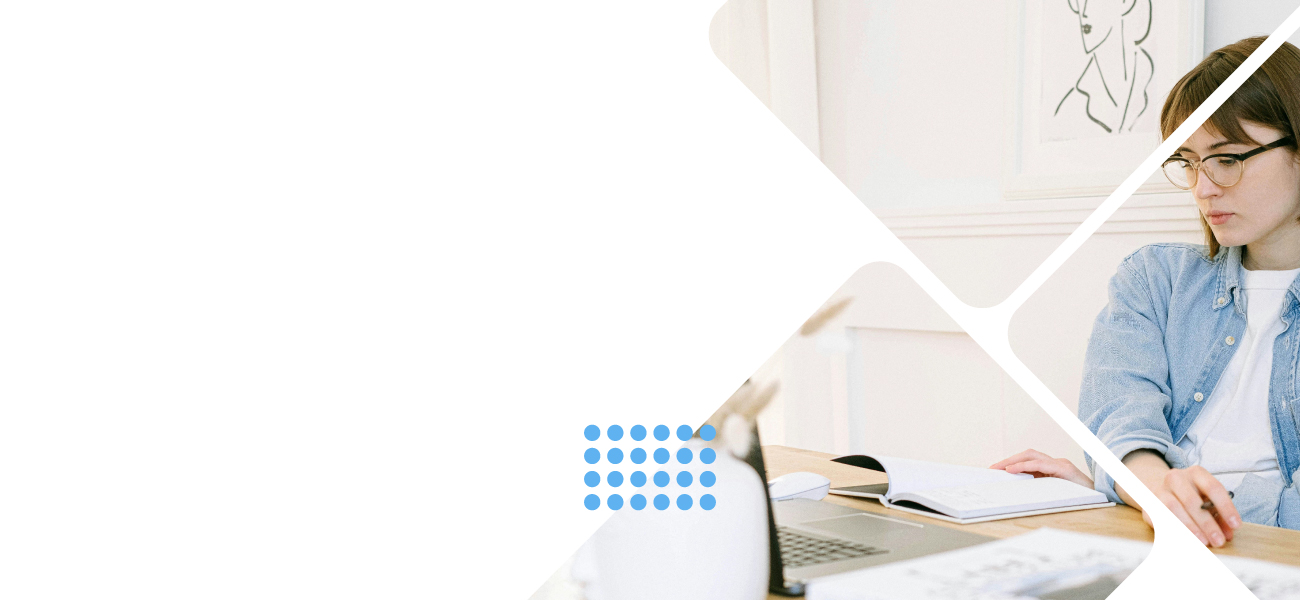¿Cognición individual o cognición distribuida? implicaciones para la concepción del aprendizaje y la educación deportiva
Resumen
El objetivo de este artículo es comparar dos perspectivas de la cognición: individual y distribuida, ahondando en sus implicaciones para el aprendizaje deportivo. Se utilizó un enfoque cualitativo aplicando como metodología la hermenéutica analógica para examinar las fuentes documentales. Los resultados mostraron que lo cognitivo en el atleta tiene un componente individual que da cuenta de su talento y habilidad, pero al tiempo, se encuentra distribuido en las mentes de sus compañeros, sumado a los artefactos tecnológicos y las condiciones contextuales que le permiten el perfeccionamiento de su desempeño. También que el aprendizaje deportivo deberá a futuro trascender la idea del desarrollo corporal o motriz y enfocarse hacia la integración mente/cuerpo del deportista. Se concluye que los procesos de aprendizaje, enseñanza, entrenamiento y competencia podrían ser mejorados con base en la teoría de la cognición distribuida, enriqueciendo la formación del profesor/entrenador, antes solo ocupado de los aspectos físico/técnicos del deporte.
Citas
Abandansari, M., Moharramzadeh, M. y Rezapour, F. (2022). Qualitative Analysis of Factors Relating to the Application of var Technology in the Development of Iran Football Premier League Competitions. Journal of Advanced Sport Technology, 5 (1): 89-104. doi:10.22098/jast.2021.1233
Agurruza, J. (2014). Waking Up from the Cognitivist Dream-The Computational View of the Mind and High Performance. Sport, Ethics and Philosophy, 8 (4), 344- 337. DOI: https://doi.org/10.1080/17511321.2015.1026629
Beuchot, M. (2013). Impacto de la hermenéutica analógica en las ciencias humanas y sociales. Hergué Editorial.
Bera, K., Shukla, A., Bapi, R. (2021). Cognitive and Motor Learning in Internally-Guided Motor Skills. Front. Psychol. https://doi.org/10.3389/fpsyg.2021.604323 DOI: https://doi.org/10.3389/fpsyg.2021.604323
Bopp, T., Vadeboncoueur, J. D. (2021). “It makes me want to take more steps”: Racially and economically marginalized youth experiences with and perceptions of Fitbit Zips® in a sport-based youth development program. Retrieved from. https://jsfd.org/
Briggs, B. C., Hall, K. S., Jain C, Macrea, M., Morey, M. C. y Oursler, K. K. (2022). “Assessing Moderate to Vigorous Physical Activity in Older Adults: Validity of a Commercial Activity Tracker.” (“Frontiers | Assessing Moderate to Vigorous Physical ...”). Front Sports Act. Living, 3 (766317). doi: 10.3389/fspor.2021.766317. DOI: https://doi.org/10.3389/fspor.2021.766317
Calahorro Cañada, F., Torres-Luque, G., López Fernández, I. y Álvarez Carnero, E. (2014). Niveles de actividad
física y acelerometría: recomendaciones y patrones de movimiento en escolares. Cuadernos de Psicología del Deporte, 14 (3), 129-140. issn: 1578-8423. https://www.redalyc.org/articulo.oa?id=227032542014 DOI: https://doi.org/10.4321/S1578-84232014000300014
Caro, H. (2015). Mente o Cuerpo: Disyuntiva metodológica para la enseñanza del deporte de alto rendimiento. Postgrado en Pedagogía del Entrenamiento Deportivo. Universidad Pedagógica Nacional.
Caro, H. (2020). Edición Genómica Heredable en el Futuro Contexto de la Salud Procreativa. Perspectiva desde el Principio Bioético de la Beneficencia [Tesis de doctorado inédita]. Universidad El Bosque, Bogotá, Colombia.
Caro, H. (2021). Seminario Fundamentos de la Psicología del Deporte. Universidad Pedagógica Nacional.
Clark, A. y Chalmers, D. (1998). The extended mind. Analysis, 58 (1), 7-19 DOI: https://doi.org/10.1111/1467-8284.00096
Chakravarty, P. (2021). The Mind Leak: An Analysis of Clark & Chalmers Extended Mind Hypothesis. (“The Mind Leak: An Analysis of Clark & amp; Chalmers ...”) [Web]. https://ssrn.com/abstract=3794727 DOI: https://doi.org/10.2139/ssrn.3794727
De La Vega R., Anabalón, H., Jara, C., Villamil-Cabello, E., Chervellino, M. y Calvo-Rodríguez, Á. (2021). Effectiveness of Mobile Technology in Managing Fatigue: Balert App. Front. (“Effectiveness of Mobile Technologyin Managing Fatigue ...”). Psychol, 12 (704955). doi:10.3389/fpsyg.2021.704955 DOI: https://doi.org/10.3389/fpsyg.2021.704955
Dobrowolski, P., Skorko, M. y Myśliwiec, M. et al. (2021). Perceptual, Attentional, and Executive Functioning After Real-Time Strategy Video Game Training: Efficacy and Relation to In-Game Behavior. J Cogn Enhanc. 5, 397-410. https://doi.org/10.1007/s41465-021-00211-w DOI: https://doi.org/10.1007/s41465-021-00211-w
Dunton, G. F., Dzubur, E., Kawabata., K., Yanez, B., Bo, B. and Intille, S. (2014). Development of a smartphone application to measure physical activity using sensor-assisted self-report. Front. Public Health Front, 2 (12). doi: 10.3389/fpubh.2014.00012 DOI: https://doi.org/10.3389/fpubh.2014.00012
Ellis, K., Godbole, S., Marshall, S., Lanckriet, G., Staudenmayer, J. y Kerr, J. (2014). Identification of active travel behaviors in challenging environments using gps, accelerometers, and machine learning algorithms. Public Health Front, 2 (36). doi:10.3389/fpubh.2014.00036 DOI: https://doi.org/10.3389/fpubh.2014.00036
Eschmann, K. C. J., Riedel, L. y Mecklinger, A. (2021). Theta Neurofeedback Training Supports Motor Performance and Flow Experience. J Cogn Enhanc. https://doi.org/10.1007/s41465-021-00236-1 DOI: https://doi.org/10.1007/s41465-021-00236-1
Fabbrichesi, R. (s.f.). Peirce, Mead, and the Theory of Extended Mind [Web]. Digital Companion to C. S. Peirce. http://www.commens.org
Friehs, M., Whelan, E., Güldenpenning, I., Krause, D. y Weigelt, M. (2022). “Stimulating performance: A scoping review on transcranial electrical stimulation effects on Olympic sports”. Psychology of Sport and Exercise, 59 (102130). DOI: https://doi.org/10.1016/j.psychsport.2021.102130
Gentile, M. y Lieto, A. (2021.) The role of mental rotation in Tetris tm gameplay: an act-R computational cognitive model. Cognitive Systems Research. DOI: https://doi.org/10.1016/j.cogsys.2021.12.005
Gonzalez, Leoni, M. (2016). Deporte y cambio. La aparición de Usain Bolt y el reciente cambio de paradigma en la disciplina de los cien metros llanos. vii Jornadas Nacionales de Antropología y Filosofía, Buenos Aires.
Graham, D. J., and Hipp, J. A. (2014). Emerging technologies to promote and evaluate physical activity: cutting-edge research and future directions. Public Health Front, 2 (66). doi: 10.3389/fpubh.2014.00066 DOI: https://doi.org/10.3389/fpubh.2014.00066
Immler, S., Rappelsberger, P., Baca, A. y Exel, J. (2021). Guardiola, Klopp, and Pochettino: ¿The Purveyors of What? “The Use of Passing Network Analysis to Identify and Compare Coaching Styles in Professional Football”. Sports Act. Living, 3 (725554). doi: 10.3389/fspor.2021.725554 DOI: https://doi.org/10.3389/fspor.2021.725554
Jølstad, P. A. H.; Reid, R. C.; Gjevestad, J. G. O. y Gilgien, M. (2022). Validity of the AdMos, Advanced Sport Instruments, gnss Sensor for Use in Alpine Skiing. Remote Sens, 14 (22). https://doi.org/10.3390/rs14010022 DOI: https://doi.org/10.3390/rs14010022
Jeunet, C., Hauw, D. y Millán, JdR. (2020). Sport Psychology: Technologies Ahead. Front. Sports Act. Living, 2 (10). doi: 10.3389/fspor.2020.00010 DOI: https://doi.org/10.3389/fspor.2020.00010
Klinker, C. D., Schipperijn, J., Kerr, J., Ersbøll, A. K., y Troelsen, J. (2014). Context-specific outdoor time and physical activity among school-children across gender and age: using accelerometers and gps to advance methods. Front. Public Health, 2 (20). doi: 10.3389/fpubh.2014.00020 DOI: https://doi.org/10.3389/fpubh.2014.00020
Koul, S. K., Bharadwaj, R. (2021). Introduction to Body Centric Wireless Communication. In: Wearable Antennas and Body Centric Communication. Lecture Notes in Electrical Engineering, 787. Kujawski, S. y Kujawska, A. (2016). How can cognitive science contribute to sport? How can sport contribute to neuroscience? Baltic Journal of Health and Physical Activity, 8 (1), 58-65. DOI: https://doi.org/10.29359/BJHPA.08.1.07
Kumar, Mu., Kumar, Ma., y Patel, S. (2021). Paralympics: an open platform with scope for disabilities and technologies.Design Engineering. doi: 10.6084/m9.figshare. 17056010.v1.
Ladino, M. (2021). Plataformas Tecnológicas: Planificación del Entrenamiento para Semifondo y Fondo. Ponencia: I Congreso Internacional y III Congreso Colombiano de Atletismo - 2a. Jornada. Acedatle y Editorial Kinesis. Bogotá, Colombia.
Lee, Y. y Kim, D. (2022). The influence of technological interactivity and media sociability on sport consumer value co-creation behaviors via collective efficacy and collective intelligence. International Journal of Sports
Marketing and Sponsorship, 23 (1), 18-40. https://doi.org/10.1108/ijsms-04-2020-0058 DOI: https://doi.org/10.1108/IJSMS-04-2020-0058
Mamo, Y., Su, Y. y Andrew, D. (2021). The transformative impact of big data applications in sport marketing: current and future directions. DOI: https://doi.org/10.1108/IJSMS-03-2021-0073
Martin, L. (2019). Sports science data protocol. Sport Exerc Med Open Journal, 5 (2), 36-41. doi:10.17140/ semoj-5-174 DOI: https://doi.org/10.17140/SEMOJ-5-174
Michaelian, K. y Sutton, J. (2017). Collective mental time travel: remembering the past and imagining the future Together. Synthese. doi 10.1007/s11229-017-1449-1 S.I. DOI: https://doi.org/10.1007/s11229-017-1449-1
Mohamed, A. (s. f.). A training program supported by visual basic technology and its effect on performance level of Spiking in volleyball. Assiut Journal for Sport Science Arts, 2020 (2), 88-99. 10.21608/ajssa.2020.147619 DOI: https://doi.org/10.21608/ajssa.2020.147619
Neto, E., Aparecida da Silva, E., Rubens de Carvalho Nunes, H., Bazan, R., Pascucci Sande de Souza, L. y Luvizutto, G. (2022). Effect of transcranial direct current stimulation in addition to visuomotor training on choice reaction time and cognition function in amateur soccer players (fast trial): A randomized control trial. Neuroscience Letters, 766 (1), 136346. https://doi.org/10.1016/j.neulet.2021.136346 DOI: https://doi.org/10.1016/j.neulet.2021.136346
Nguyen, H., Duy T., Bingkun, M. y Jiang, H. (2021). The application of machine learning and deep learning in sport: predicting nba players’ performance and popularity. Journal of Information and Telecommunication. doi: https://doi.org/10.1080/24751839.2021.1977066 DOI: https://doi.org/10.1080/24751839.2021.1977066
Pea, R. (1993). Practices of distributed intelligence and designs for education. Distributed cognitions. Psychological and educational considerations. Amorrortu.
Perkins, D. (1993). Person-plus: a distributed view of thinking and learning. Distributed cognitions. Psychological
and educational considerations. Amorrortu.
Pyke, W., Vostanis, A. y Javadi, ah. (2021). Electrical Brain Stimulation During a Retrieval-Based Learning Task Can Impair Long-Term Memory. J. Cogn Enhanc, 5, 218-232. https://doi.org/10.1007/s41465-020-00200-5 DOI: https://doi.org/10.1007/s41465-020-00200-5
Sai, Srinivas, N., Vimalan, V., Padmanabhan, P. y Gulyás, B. (2021). An Overview on Cognitive Function Enhancement through Physical Exercises. Brain Sci., 11 (1289). https://doi.org/10.3390/brainsci11101289 DOI: https://doi.org/10.3390/brainsci11101289
Schipperijn, J., Kerr, J., Duncan, S., Madsen, T., Klinker, C. D. y Troelsen, J. (2014). Dynamic accuracy of gps receivers for use in health research: a novel method to assess gps accuracy in real-world settings. Public Health Front, 2 (21). doi: 10.3389/fpubh.2014.00021 DOI: https://doi.org/10.3389/fpubh.2014.00021
Seshadri, D. R., Thom, M. L., Harlow, E. R., Gabbett, T. J., Geletka, B. J., Hsu, J. J., Drummond, C. K., Phelan D. M., and
Voos, J. E. (2021). Wearable Technology and Analytics as a Complementary Toolkit to Optimize Workload and to Reduce Injury Burden. Front. Sports Act. Living, 2 (630576). doi: 10.3389/fspor.2020.630576 DOI: https://doi.org/10.3389/fspor.2020.630576
Springer, J. (2013). “I am very, very proud of myself ”: Improving Youth Activity Levels Using Self Determination Theory in Program Development. Frontiers in public health, 1 (46). doi: 10.3389/fpubh.2013.00046 DOI: https://doi.org/10.3389/fpubh.2013.00046
Sutton, J. (2006). Introduction: Memory, Embodied Cognition, and the Extended Mind. Philosophical Psychology, 19 (3), 281-289. DOI: https://doi.org/10.1080/09515080600702550
Theiner, G. (2017). The Extended Mind. The Encyclopedia of Social Theory. https://www.researchgate.net/ publication/305725483 DOI: https://doi.org/10.1002/9781118430873.est0859
Torro-Alves, N., Fernández-Calvo, B., Casanova, A., Campos Neto, A. y Dos Santos, N. (2014). The Use of Programming Languages and Computer Software in Psychological Science. Trends in Psychology, 22 (3), 529-538. doi:10.9788/tp2014.3-09 DOI: https://doi.org/10.9788/TP2014.3-06
Wells, A., Mayer, R. E., Plass, J. L. et al. (2021). Playing a Video Game and Learning to Think: What’s the Connection? J Cogn Enhanc, 5, 459-467. doi: https://doi.org/10.1007/s41465-021-00214-7 DOI: https://doi.org/10.1007/s41465-021-00214-7
Wertsch, J. (1995). Vygotski y la formación social de la mente. Paidós. Zan, G. y Lee, J. (2019). Emerging Technology in Promoting Physical Activity and Health: Challenges and Opportunities.
J. Clin. Med., 8 (1830). doi:10.3390/jcm8111830. www.mdpi.com/journal/jcm DOI: https://doi.org/10.3390/jcm8111830
Zhaoyin, J., Fuyou, Z. y Laishuang, S. (2021). Recognition of sports action based on image processing technology and analysis of the development of the pattern of the sports industry. Scientific Programming, Article id 4815097. https://doi.org/10.1155/2021/4815097
Ziang, Z., Zhang, F. y Sun, L. (2021). Sports Action Recognition Based on Image Processing Technology and Analysis of the Development of Sports Industry Pattern. Scientific Programming. 1-11. doi:10.1155/2021/4815097. DOI: https://doi.org/10.1155/2021/4815097
Descargas

Esta obra está bajo una licencia internacional Creative Commons Atribución-NoComercial 4.0.

















